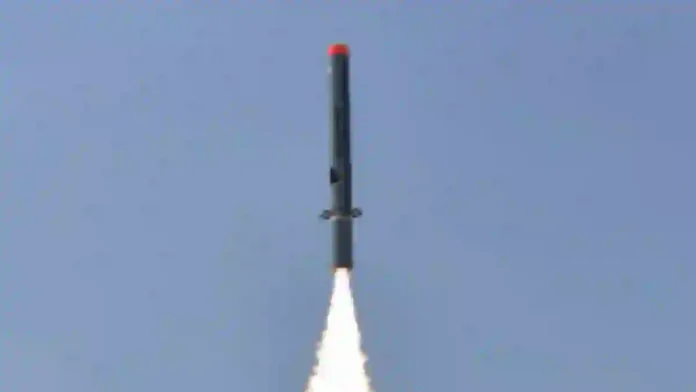India is preparing to conduct a crucial test of the Indigenous Technology Cruise Missile (ITCM), a new-generation long-range subsonic cruise missile developed by DRDO in collaboration with the Indian Navy. Capable of striking targets at ranges up to 1,000 kilometres, ITCM represents a major step in expanding India’s maritime strike and land-attack options beyond existing systems like the BrahMos supersonic cruise missile.
Evolution And Design
The ITCM is a technological successor to the Nirbhay cruise missile program, which served as India’s test platform for long-range subsonic missile development. Unlike earlier Nirbhay prototypes that relied on imported propulsion, ITCM is powered by an indigenously developed turbofan engine, providing greater reliability, local supply security, and longer endurance. The missile flies at subsonic speeds, but its range and stealth features make it highly versatile for diverse missions.
Read- Post-Op Sindoor, Proposal To Enhance IAF’s Combat Strength On Cards
Features And Capabilities
ITCM is designed to strike both land and sea targets with precision using an indigenous radio-frequency seeker that ensures effective target tracking and engagement. It incorporates advanced navigation systems and ground-hugging flight profiles, allowing the missile to evade detection by hostile radars. The missile also features modern avionics and guidance integration compatible with naval combat management systems, ensuring seamless deployment from frontline warships.
Naval Integration
A major aspect of the upcoming test involves integrating ITCM with the Indian Navy’s shipborne radar and combat systems. DRDO is developing a temporary Vertical Launch System (VLS) for warship-based launches, while the Navy transitions from Russian UKSK launchers to more versatile Universal Vertical Launch Modules (UVLMs). These UVLMs will enable deployment of multiple missile types, including BrahMos and ITCM, from a single standardized launcher, thus enhancing fleet flexibility.
Variants Under Development
To ensure broad operational usage, DRDO is working on multiple variants of ITCM across different platforms:
Ship-Launched Variant – Primarily for surface warships, forming part of the Navy’s strike capability.
Submarine-Launched Cruise Missile (SLCM) – Under development for undersea deterrence missions.
Land-Based Long Range Land Attack Cruise Missile (LRLACM) – For deep-strike precision missions against enemy infrastructure.
Air-Launched Variant – Potential integration on frontline fighters and bombers for extended standoff strike roles.
Read- India-Pak Normalisation Without Kashmir Fix Is Fool’s Paradise: Shehbaz Sharif
Read- IAF Aiming At Much More Than 42 Fighter Aircraft Squadrons, Says Top Official
Strategic Importance
The ITCM is not intended to replace the BrahMos, but to complement it. While BrahMos is a supersonic missile (around Mach 2.8–3.0) with shorter ranges of around 300–450 km, ITCM offers greater range at subsonic speeds, enabling strategic penetration into deep enemy territory. Together, they provide the Indian Navy with a mix of high-speed short-to-medium range strikes and long-range precision subsonic engagements.
Upcoming Test And Outlook
The upcoming ship-launched test, expected later this year, will validate ITCM’s ability to work with ship combat systems and effectively engage long-range targets at sea. A successful demonstration would position ITCM as a next-generation indigenous cruise missile, reinforcing India’s push for weapons self-reliance under Atmanirbhar Bharat, and strengthening the Navy’s ability to project power across the Indian Ocean and beyond.
IDN (With Agency Inputs)
Agencies




